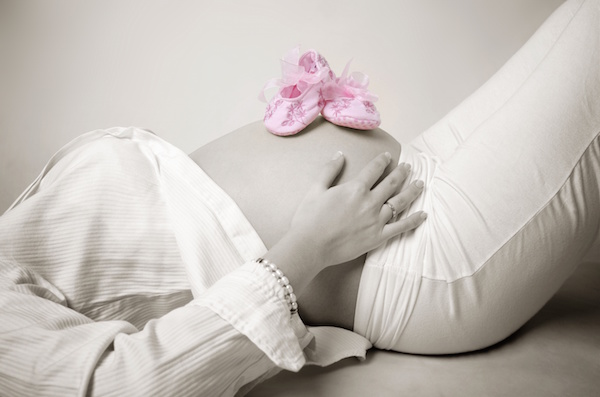
TUESDAY, Oct. 11 (HealthDay News) — Preeclampsia, a potentially dangerous spike in blood pressure during pregnancy, may be due to a microscopic battle going on within the placenta between cells directed by the father’s genes and those directed by the mother, a new study suggests.
Though not the first research to link preeclampsia with the activity of cells in the placenta, the new report adds more details about the underlying mechanism that may be causing the problem.
During prenatal growth, certain genes are expressed or repressed, depending on their parental origin. In the placenta, the father’s gene expression dominates.
In a normal pregnancy, trophoblasts, a father-directed cell, invade and attack the blood vessels that bring blood from the mother into the placenta. The trophoblasts attach to the walls of blood vessels, increasing the flow of blood and enabling the baby to grow and receive the nutrients it needs to thrive, explained study author Dr. Harvey Kliman, a research scientist in the department of obstetrics, gynecology and reproductive sciences at Yale University School of Medicine.
But at the same time, the mother’s immune system cells (lymphocytes) rush to kill the invasive trophoblasts. If the lymphocytes succeed in killing the trophoblasts, then there isn’t enough blood flow to the placenta — causing blood pressure to rise.
“The placenta is responsible for keeping the fetus alive. It will do whatever is necessary to do that,” Kliman said. “The placenta has a sensor, a molecular mechanism that senses how much blood is flowing into the placenta. If there’s not enough blood, you will become hypertensive.”
Though his research didn’t investigate that mechanism specifically, it’s well known that an obstruction to blood flow to another organ, the kidney, leads quickly to primary renal hypertension, a type of high blood pressure. The placenta, he says, has a similar internal thermostat. If it’s not getting enough blood, blood pressure goes up in an attempt to get more blood into the organ and prevent the fetus from dying.
So, to outwit the mother’s lymphocytes, the father’s trophoblasts create a diversion. Trophoblasts make a protein (PP13), which exits the blood vessels and travels into the lining of the uterus.
The lymphocytes rush to deal with that inflammation, ignoring the trophoblasts.
“All of the mother’s soldiers are being diverted and focusing on the PP13 instead of going after the trophoblasts,” Kliman said. “It’s very sneaky.”
The findings are published in the Oct. 11 online issue of Reproductive Sciences.
In the study, researchers used placental tissue from women in the United States and Israel.
Prior research had found that when levels of the PP13 protein are low early in pregnancy, women were more likely to develop preeclampsia several months later, but why PP13 contributed to that wasn’t understood.
Kliman said the molecular battle is driven by the father-directed trophoblasts, which are trying to create conditions for a big, healthy baby, while mother needs to tamp down on growth so that the fetus is small enough to get through the birth canal.
“The mother does not want to die. The father wants a big baby. So they compromise,” he said. “If the invasive trophoblasts are killed, the blood vessels wouldn’t open up, and the baby would die. If the father wins the battle and the trophoblasts are able to go into the uterus, the baby would grow too big and the woman would die.”
Dr. Jill Rabin, chief of ambulatory care in the obstetrics and gynecology department and head of urogynecology at Long Island Jewish Medical Center in New Hyde Park, N.Y., said the research adds “teeth” to the theory of the role of trophoblasts in preeclampsia.
“It makes a lot of sense that the mother’s immune system had to be tricked somehow, otherwise how would this happen that a placenta or a fetus could set up housekeeping inside the mother?” Rabin said. “The placenta is very smart.”
Eventually, the hope is that understanding the underlying biological mechanism that causes preeclampsia will lead to treatments, Rabin said, adding that more studies are needed to confirm the findings.
Preeclampsia usually shows up in the latter half of pregnancy. Many cases are mild, but it can progress to eclampsia, or severely elevated blood pressure and protein in the urine that can lead to seizures and puts a woman at risk of stroke or organ damage. The only cure for it is to deliver the baby, experts said.
More information
The American Academy of Family Physicians has more on preeclampsia.

